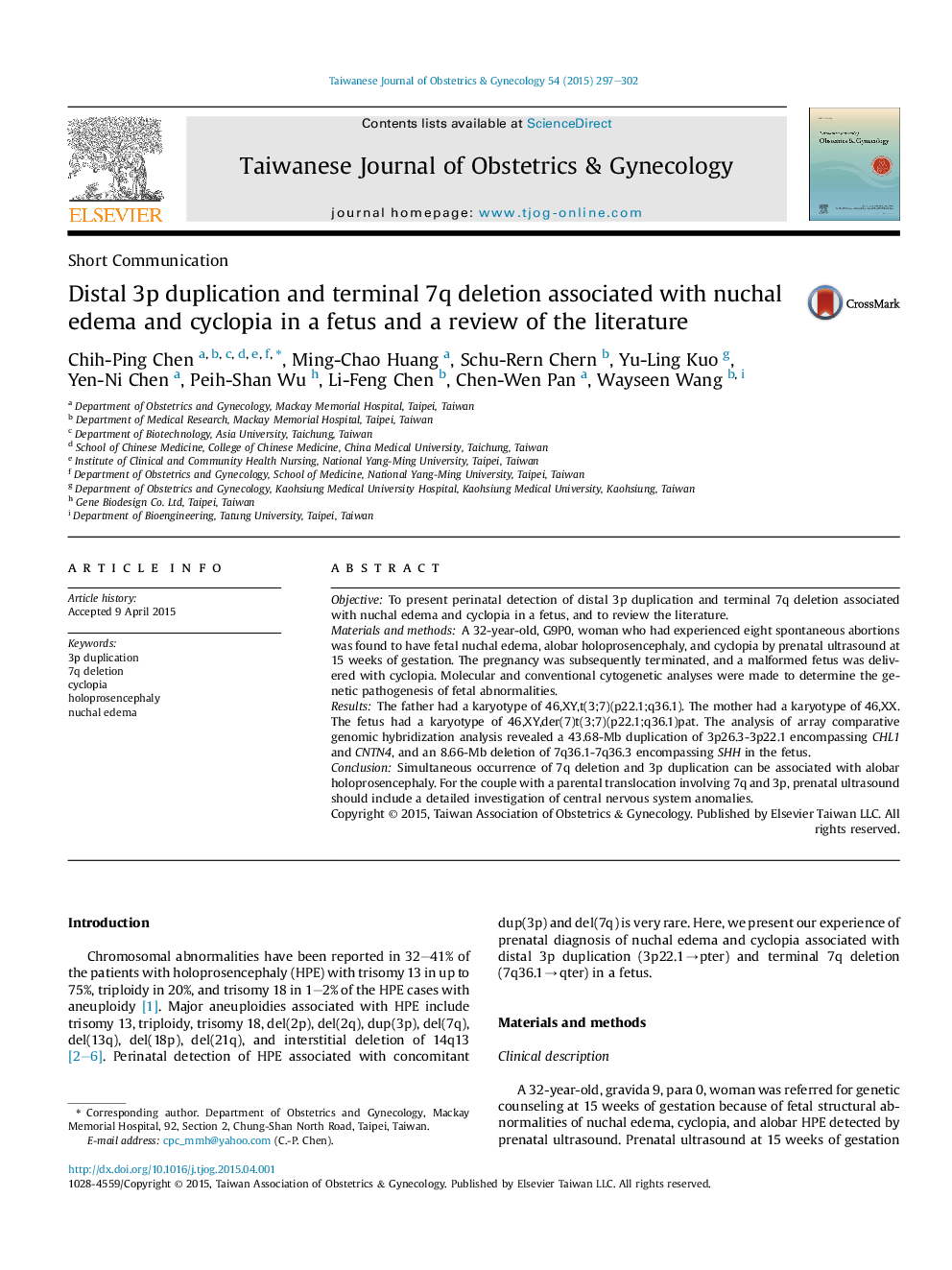| Article ID | Journal | Published Year | Pages | File Type |
|---|---|---|---|---|
| 3975098 | Taiwanese Journal of Obstetrics and Gynecology | 2015 | 6 Pages |
ObjectiveTo present perinatal detection of distal 3p duplication and terminal 7q deletion associated with nuchal edema and cyclopia in a fetus, and to review the literature.Materials and methodsA 32-year-old, G9P0, woman who had experienced eight spontaneous abortions was found to have fetal nuchal edema, alobar holoprosencephaly, and cyclopia by prenatal ultrasound at 15 weeks of gestation. The pregnancy was subsequently terminated, and a malformed fetus was delivered with cyclopia. Molecular and conventional cytogenetic analyses were made to determine the genetic pathogenesis of fetal abnormalities.ResultsThe father had a karyotype of 46,XY,t(3;7)(p22.1;q36.1). The mother had a karyotype of 46,XX. The fetus had a karyotype of 46,XY,der(7)t(3;7)(p22.1;q36.1)pat. The analysis of array comparative genomic hybridization analysis revealed a 43.68-Mb duplication of 3p26.3-3p22.1 encompassing CHL1 and CNTN4, and an 8.66-Mb deletion of 7q36.1-7q36.3 encompassing SHH in the fetus.ConclusionSimultaneous occurrence of 7q deletion and 3p duplication can be associated with alobar holoprosencephaly. For the couple with a parental translocation involving 7q and 3p, prenatal ultrasound should include a detailed investigation of central nervous system anomalies.
